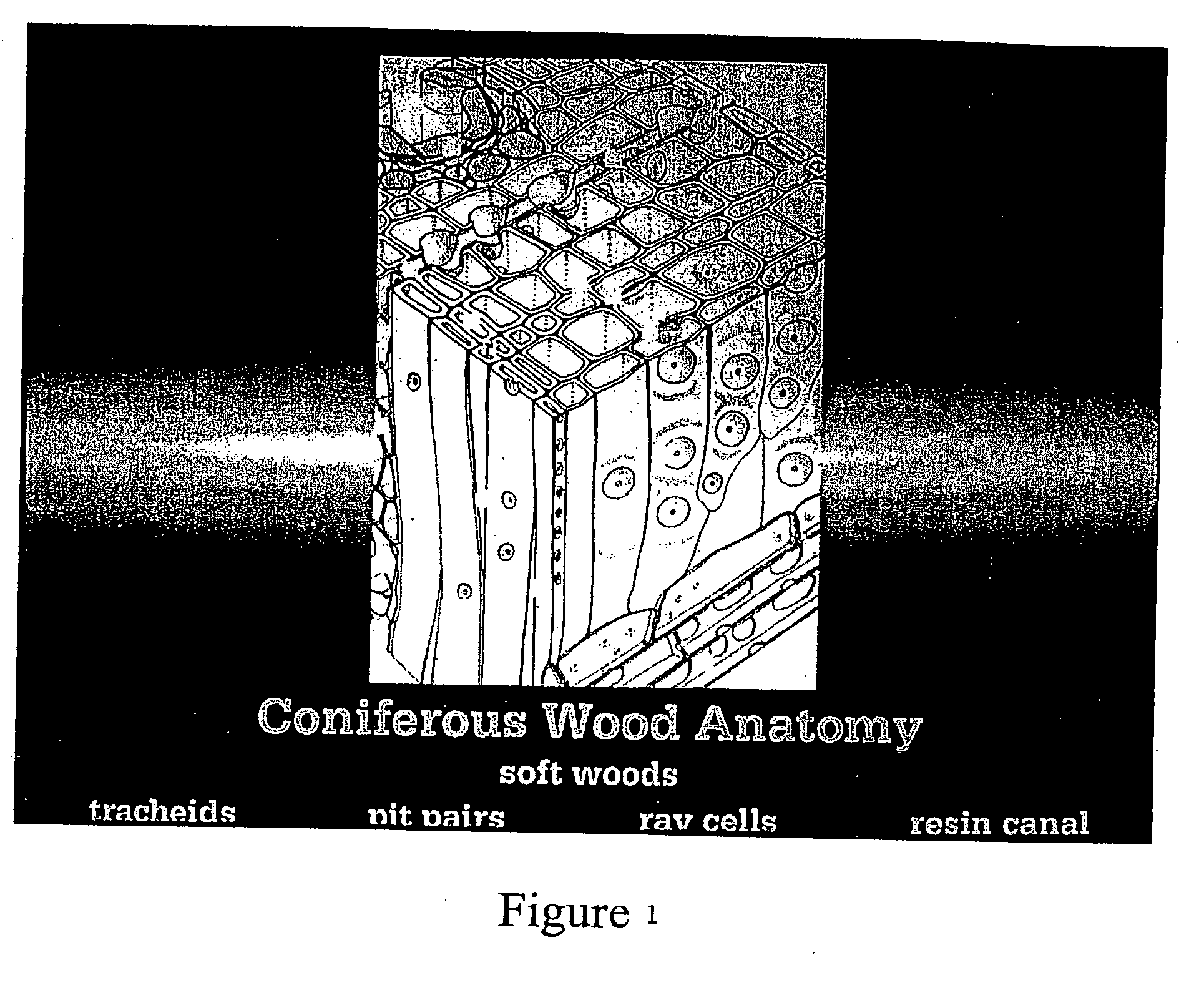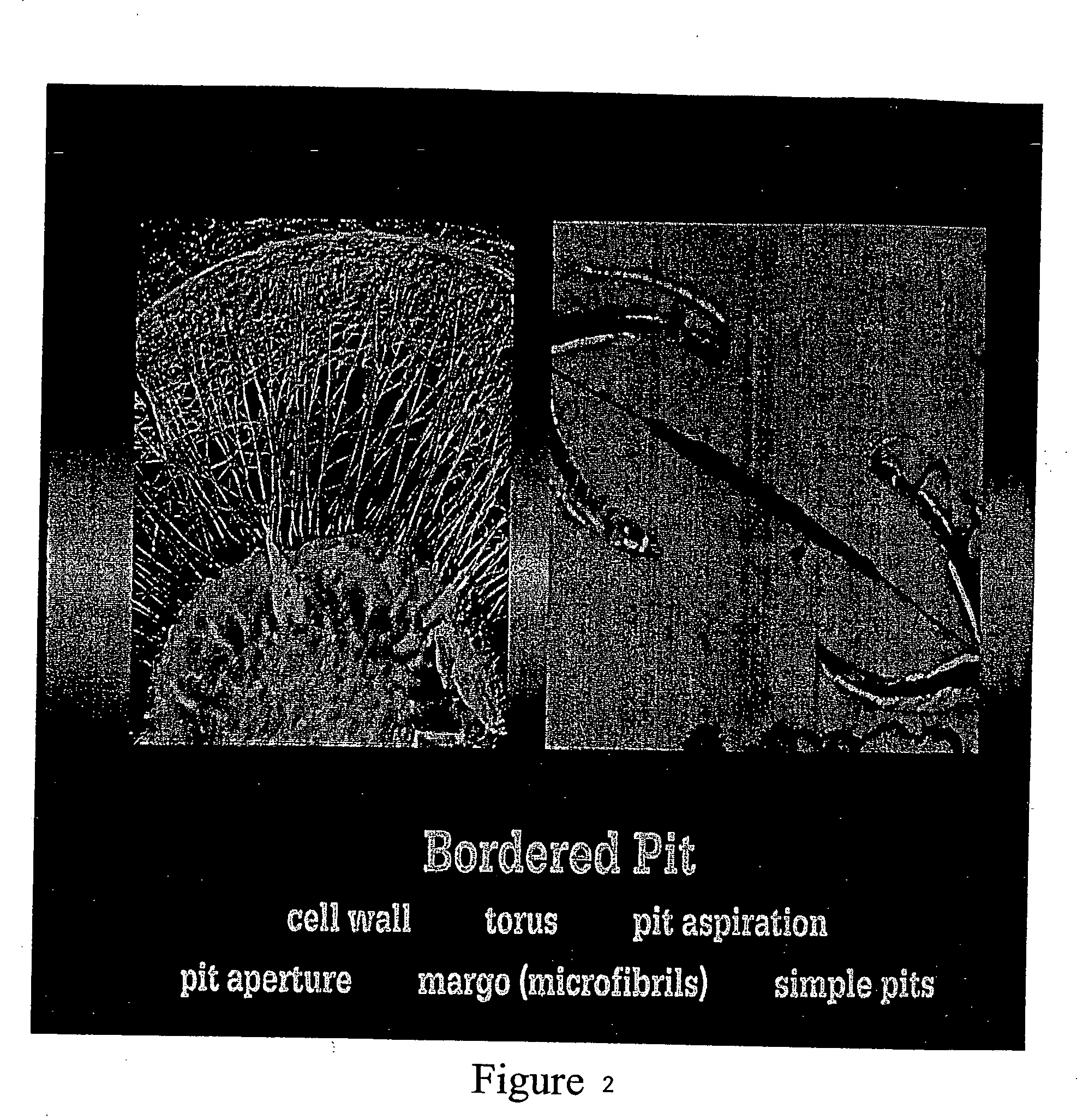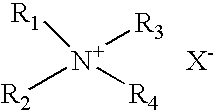Non-alkaline micronized wood preservative formulations
a preservative and non-alkaline technology, applied in the field of wood preservation, can solve the problems of high loss of copper from leaching, low water soluble content of organic biocides, undesirable color of surface residues,
- Summary
- Abstract
- Description
- Claims
- Application Information
AI Technical Summary
Benefits of technology
Problems solved by technology
Method used
Image
Examples
example 1
[0060] 500 g of copper hydroxide and 100 g dehydroacetic acid were added to a container containing 991.7 grams of water and 75.0 grams of commercially available dispersants / wetting agents. The mixture was mechanically stirred for 5 minutes and then placed in a grinding mill. The sample was ground for about 30 minutes, and a stable dispersion containing about 30% copper hydroxide was obtained. The particle size of the copper hydroxide dispersion was analyzed by Horiba LA-910 Particle Size Distribution Analyzer (PSDA). The average particle size was 0.195 micrometers (μm) with a distribution range of 0.04 μm to 1.5 μm.
example 2
[0061] 1000 grams of basic copper carbonate was mixed with 1908.3 grams of water and 175.0 grams of commercially available wetting agents / dispersants and then 250.0 g boric acid was added to the mixture. The mixture was mechanically stirred for 10 minutes. The mixture was then placed in a grinding mill and ground for about 20 minutes. A stable dispersion of basic copper carbonate was obtained with an average particle size of 0.199 micrometers.
example 3
[0062] 1000 grams of basic copper carbonate and 20 grams of were mixed with 3780 grams of water and 200 grams of wetting agents / dispersants. The mixture was mechanically stirred for about 10 minutes. The mixture was then placed in a grinding mill and ground for about 30 minutes. A stable dispersion containing 25 wt % basic copper carbonate and 0.5 wt % tebuconazole was obtained with an average particle size of 0.200 micrometers. 10.0 grams CO2 was then sparged into the dispersion to adjust the pH to 6.0.
PUM
| Property | Measurement | Unit |
|---|---|---|
| Diameter | aaaaa | aaaaa |
| Composition | aaaaa | aaaaa |
| Water solubility | aaaaa | aaaaa |
Abstract
Description
Claims
Application Information
 Login to View More
Login to View More - R&D
- Intellectual Property
- Life Sciences
- Materials
- Tech Scout
- Unparalleled Data Quality
- Higher Quality Content
- 60% Fewer Hallucinations
Browse by: Latest US Patents, China's latest patents, Technical Efficacy Thesaurus, Application Domain, Technology Topic, Popular Technical Reports.
© 2025 PatSnap. All rights reserved.Legal|Privacy policy|Modern Slavery Act Transparency Statement|Sitemap|About US| Contact US: help@patsnap.com



